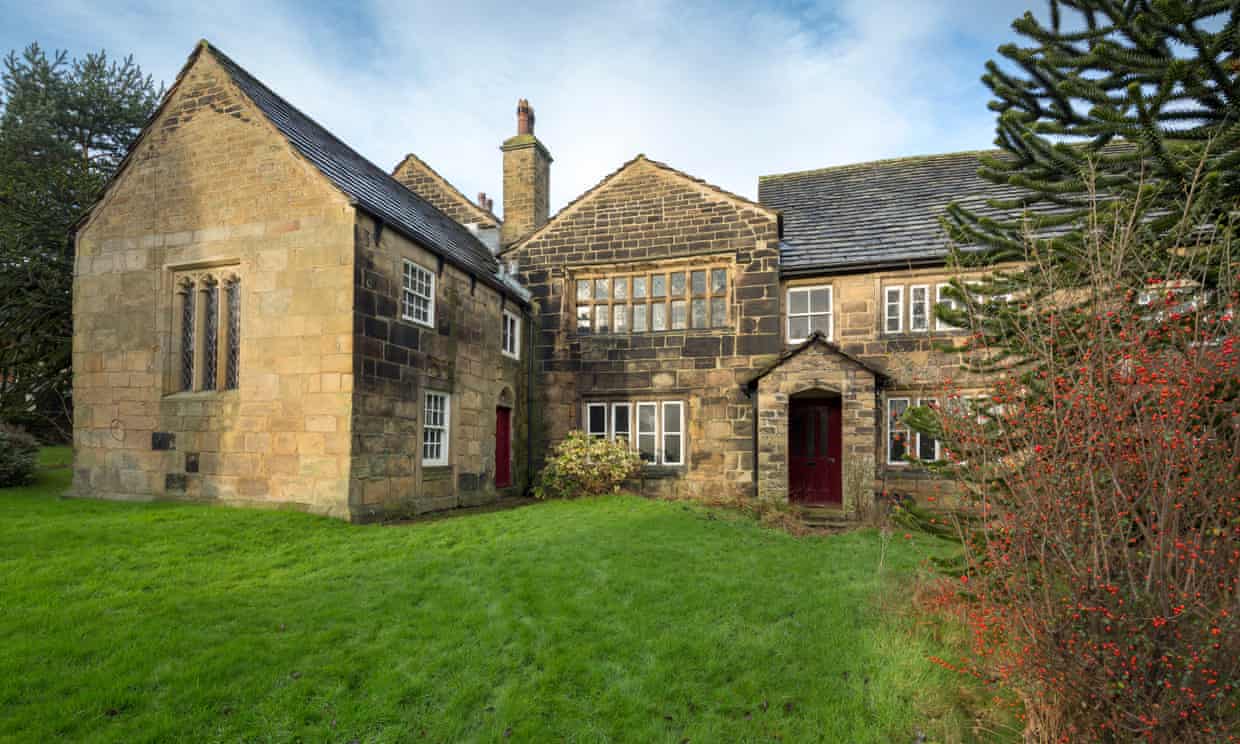
Restorers at Calverley Old Hall, a medieval manor in Yorkshire, England, were recently shocked to discover a suite of Tudor wall paintings hidden beneath 19th-century plaster in an unassuming bedroom.
The hidden artwork, believed to date to the reign of Queen Elizabeth I (1558–1603), is “the discovery of a lifetime,” Anna Keay, director the U.K.’s Landmark Trust, told the Guardian.
“I haven’t seen, anywhere else, such carefully planned grotesque work,” added trust historian Caroline Stanford, using the term for a type of intricate design that originated with Roman emperor Nero’s Golden Villa. The patterns came into vogue after a young man literally fell into the complex’s buried chambers in the late 15th century.
“You are always alert to the possibility that there might be painted decoration but it is astonishing to find a whole Elizabethan painted chamber in such pristine condition, it is just really exciting,” Stanford said.
Roman artists began visiting the ancient 1st century ruin, including Raphael and Michelangelo. The Domus Aurea became hugely influential for Renaissance art—the frescoes in the papal apartments at Rome’s Castel Sant’Angelo, for instance, are directly influenced by the ancient subterranean paintings.
The trend for the exaggerated grotesque style spread to the Low Countries and Germany, and then, thanks to printed books, traveled as far afield as England, where a chamber at Calverley Old Hall was adorned with mythical creatures and trailing vines—a sign of the family’s cultural sophistication. The black, red, and white design includes griffins, birds with teeth, Tudor roses, and pomegranates, the emblem of Catherine of Aragon, first wife of Henry VIII.
A detail of the 16th-century wall paintings at Calverley Old Hall, Yorkshire, England. Photo by Simon Hogben/Landmark Trust.
When Landmark Trust first began work to restore the room, which had been painted peach in the 1970s, the team noticed some colored stains on exposed timber, reports the Yorkshire Post. The likeliest explanation was dirt or mold, but Keay still knew it warranted further investigation.
“Then came the thunderbolts. First, the Lincoln team removed the plaster in a further five small areas and revealed what we had not dared to hope: wall paintings. Black and white and ochre and red, clear and unmistakable wall paintings. We were speechless,” she wrote in a blog post.
“Never in my own 27 years of working in historic buildings have I ever witnessed a discovery like this. Hidden panelling, yes, little snatches of decorative painting, once or twice,” Keay added. “But an entire painted chamber absolutely lost to memory, a time machine to the age of the Reformation and the Virgin Queen, never.”
Landmark Trust plans to conserve the paintings, and is looking to raise £94,000 (over $125,000) for the job. The project is part of larger efforts to reopen long shuttered parts of the home, which traces its origins to the 12th century, to the public.
See more photos below.
A detail of the 16th-century wall paintings at Calverley Old Hall, Yorkshire, England. Photo by Tom Burrows/Landmark Trust.
A detail of the 16th-century wall paintings at Calverley Old Hall, Yorkshire, England. Photo by Tom Burrows/Landmark Trust.
The great hall of Calverley Old Hall, Yorkshire, England. Photo by Tom Burrows/Landmark Trust.
Restorers discovered floor-to-ceiling 16th-century wall paintings at Calverley Old Hall, Yorkshire, England. Photo by Simon Hogben/Landmark Trust.
Restorers discovered floor-to-ceiling 16th-century wall paintings at Calverley Old Hall, Yorkshire, England. Photo by Tom Burrows/Landmark Trust.